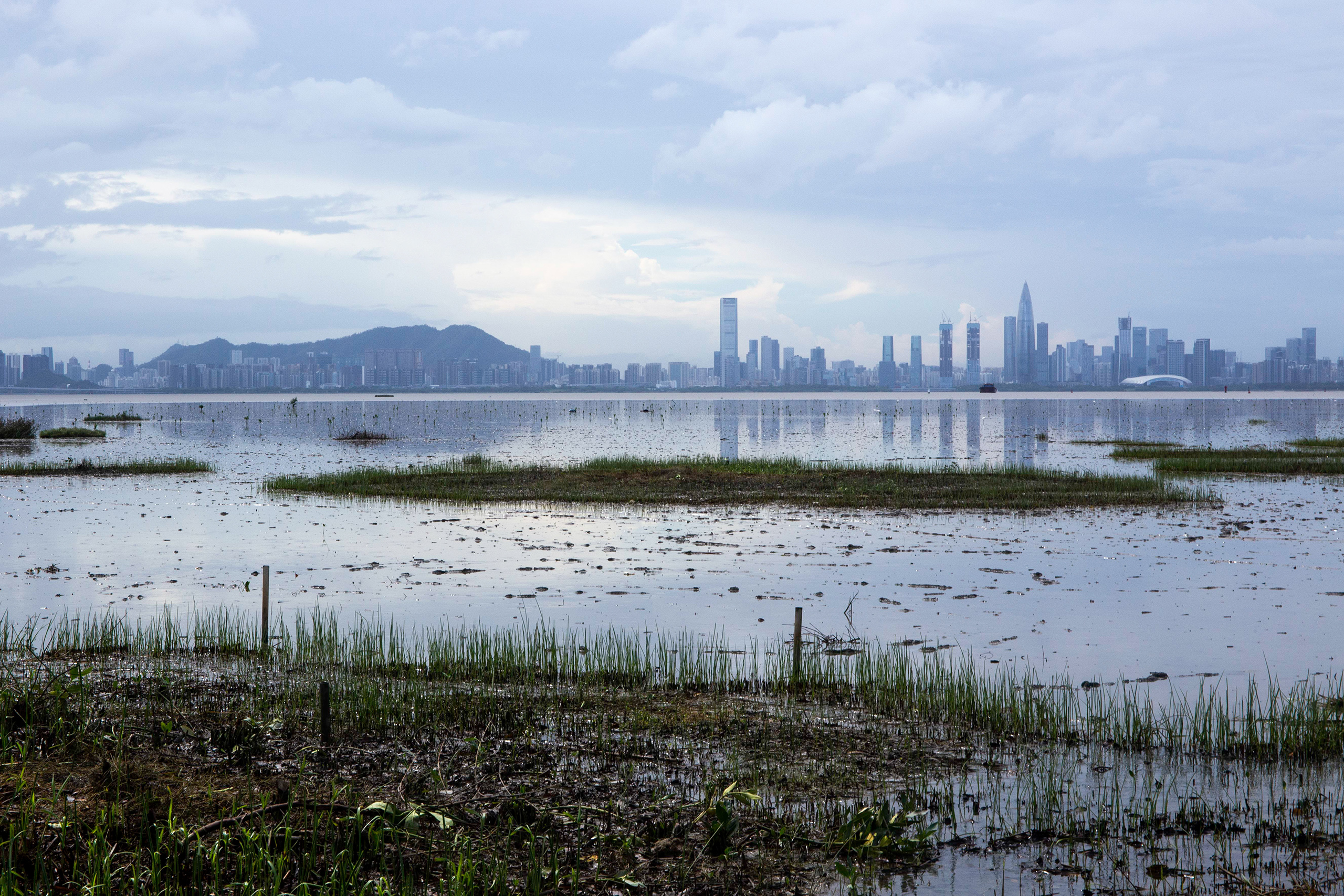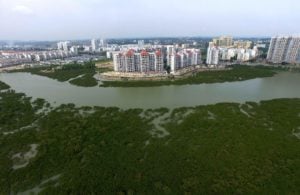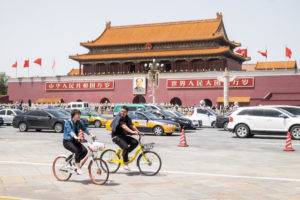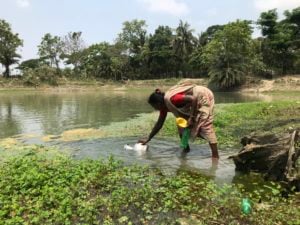A case reported recently by the Central Environmental Inspectorate highlights problems with protecting China’s ecosystems. During construction work, the Guangxi Beibu Gulf International Port Group damaged 257 mu (170,000 square metres) of mangrove swamp. This was not a first offence. In 2016, during the inspectorate’s first round of checks, changes had been ordered to reduce the impact of the work on mangroves. Three rounds of inspections later, and after six orders by the local natural resources authorities to halt work or make changes, the area being damaged has only increased. The illegal work only stopped in May 2020, when the group was summoned for talks with the local authorities.
The Ministry of Ecology and Environment pointed out the work was in clear breach of Guangxi’s own regulations on protecting mangrove swamps. The region drew its first ecological redline in 2018 but its actual scope was never made public. Experts say that, under China’s 2020 five-year plan for protection and restoration of mangrove swamps and a Guangxi 10-year plan issued the same year, this project is likely to fall within a redline zone.
Ecological conservation redlines demarcate areas that provide important ecological services with the aim of protecting them. These include shallow coastal waters, wetlands, glaciers and forests.
In 1998, catastrophic floods hit the Yangtze River valley made worse by overdevelopment of grasslands and wetlands that would otherwise have helped absorb the floodwater. China responded in 2000 by piloting the ecological conservation redlines policy. Between 2010 and 2020, over a quarter of the country was included in the redlines – meaning put under protection or sustainable management. The aim is to protect almost all of China’s endangered species and their habitats, with simultaneous gains for the prevention of floods and sandstorms, provision of clean water and other ecosystem services. (Source: Guido Schmidt-Traub)
Environmental NGOs and legal experts have called for legislation to support the redline system. However, to date no national-level laws or regulations on managing the system have been finalised, despite the planned completion of the designating of redline zones across the country by the end of last year.
The role of redlines
China’s framework for ecological management includes nature reserves, national parks and the “Three lines & one list” system. The three “lines” here are ecological redlines, a lower limit on environmental quality, and an upper limit on resource usage. Meanwhile, an “environmental access list” determines what activities are permitted in the given area. But implementation and legislation for redlines is lagging behind the other parts of the system. The unclear legal status of the redline system creates tension between different policies and causes difficulties for those implementing them on the ground.
In May this year, the province of Guizhou removed 17 wind turbines that had been built within a redline area, highlighting issues with coordination between developing renewable energy and the redline system. Responding to questions, the Ministry of Natural Resources said small-scale, existing renewable energy installations could be allowed within a redline area, but new construction should be avoided. With no national rules on implementation of the redline system, different provinces take different approaches. This makes the fate of projects within redline areas uncertain.
The central government announced the Three lines & one list policy in June 2018. Of the “three lines”, only the redline system features actual lines on the map. Overall, the policy acts as a basis on which to manage use of natural resources and restrict certain industries.
Take Shenzhen as an example. Its environmental authorities recently published a consultation draft of proposed measures under the Three lines & one list policy. As this included definition of the three lines, with the redlines being demarcations of geographical areas, and the environmental and resource limits being specific targets for indices such as water quality in rivers, levels of PM2.5 (tiny particles in the air less than 2.5 micrometers in diameter), energy consumption and protection of natural coastlines. The draft divides Shenzhen into a grid of 220 zones, with a further 26 coastal water zones. Each segment of that grid has corresponding requirements and restrictions for use by industries.

The “three lines” determine what types of project are permissible in any segment of that grid, explained Chu Jun, assistant to the secretary-general of the Guangzhou Pearl Bay Ecological Research Centre, which studies environmental protection of China’s seas and coasts. The authorities can refer to the environmental access list and reject projects which do not meet the requirements. In practice, “you can see the environmental quality limits are applied in urban areas, as that’s where pollution is worst and environmental damage has to stop. The limit on resource-use puts a ceiling on exploitation of resources, and those are being used both in urban and semi-urban areas, while redlines cover areas with valuable or vulnerable ecologies,” Chu Jun explained.
But the lack of a solid legal basis for the redline system still gives local governments plenty of room for manoeuvre. According to Chu Jun, any firm wanting to build within a redline zone has to use the environmental impact assessment report to explain why this is unavoidable. “That is often just a box-ticking exercise. Or they say locating elsewhere would be too expensive, so they have to build within a redline area. It becomes about money, rather than the environment.”
Redline rules are essential
The Ministry of Natural Resources has said on a number of occasions that rules on implementing the redlines are being drafted. Experts told China Dialogue the delay to those rules has caused disputes and prevented the redline system playing its intended role.
Early this year, a consultation draft of those rules was leaked. The 24 articles of that document provide detailed rules for implementation of the redline system, covering placement, management, adjustment and supervision.
Although that draft may not be authoritative, Chu Jun and her organisation found that further improvements may be needed to tackle some typical issues. For example, in the draft the ministry defines, manages and supervises the redline system, giving it the right to oversee its own work. It also delegates approval for adjustments to redlines to local governments to accommodate significant national projects.
“We’d like to see approvals and adjustments of redlines to stay at provincial level or above, regardless of the size of the project, said Chu Jun. In China, delegating such rights to local government usually means a loosening of the rules, as local governments tend to prefer economic growth over environmental targets. Where those rights reside will therefore be crucial in determining whether or not the redline system can provide effective protection.
Redlines should not be “elastic”, Gao Jixi, chair of the MEE’s Centre for Satellite Application on Ecology and Environment, said in an interview. In the past, China’s nature reserves have seen their boundaries shrunk to allow for economic growth. In 2018, guidance on setting redlines said the redlines can be regularly improved and adjusted – on the assumption this means expansion, not reduction. Gao Jixi, who has been involved in setting redline policy, emphasised the agency of local governments in managing the system. He and other experts have written that enforcement and supervision, evaluation of local officials on their performance, and accountability and compensation mechanisms will all be important in ensuring that the ecological functions protected by redlines are not harmed, and that the size and nature of redline areas is maintained.
Wang Songlin, founder and chair of the Qingdao Marine Conservation Society, points out that the redline system can learn from China’s experiences with a system for defining marine functional zones. That system, which first appeared in 1988 and was fully codified in 2002, assigned one of 10 categories to marine areas, including port and shipping zones, fishery utilisation and stewardship zones, mining zones and tourist zones. Those categories gave managers a basis on which to control the presence and intensity of various activities. But Wang stressed that the current map urgently needs to be improved and updated. China was the first country to divide its marine areas into zones based on their natural endowments and social and economic demands. Despite international recognition, the system was not as successful as hoped in protecting marine environments: “One important factor was that powers to define and adjust those zones remained at the same level of government, with little in the way of oversight from central government, and few chances for civil society to participate.”








